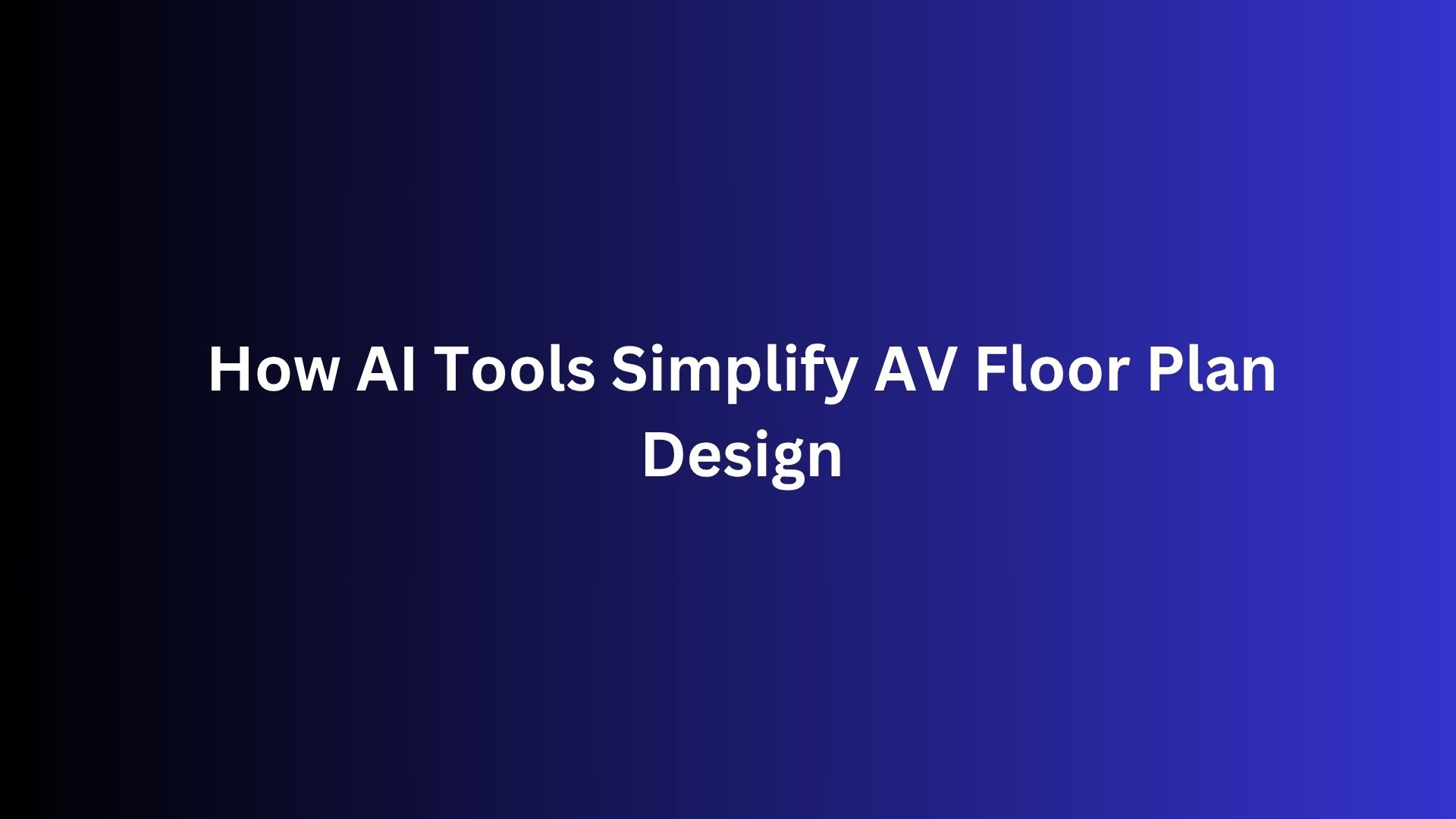Designing an effective AV system for any space requires precision, planning, and attention to detail. From selecting the right equipment to placing it correctly for optimal performance, every decision matters. In recent years, AI tools have started transforming this process, making it faster, easier, and more accurate. Today, creating an AV Floor Plan is no longer a task that requires countless hours of manual work. Instead, AI-powered solutions provide smart recommendations, automate repetitive tasks, and help designers avoid common mistakes.
In this blog, we will explore how AI tools simplify AV Floor Plan design, why they are becoming essential for modern projects, and how you can use them to improve your work.
The Challenge of AV Floor Plan Design
An AV Floor Plan is a detailed diagram that shows where all audio visual equipment will be placed within a space. This includes displays, projectors, speakers, microphones, control panels, cable routes, and racks. The goal is to ensure that the equipment supports communication, collaboration, and a great user experience.
Designing a good AV Floor Plan can be complex because:
-
Each space has unique dimensions and features that affect placement.
-
Equipment must be positioned to provide clear sightlines and even sound coverage.
-
Cable paths must be efficient and safe.
-
The design must meet industry standards and client requirements.
Traditionally, creating these plans required hours of manual drafting, multiple revisions, and coordination between different teams.
How AI Tools Simplify the Process
AI tools bring automation and intelligence to the process of AV Floor Plan design. Here are some ways they help:
1. Auto-Placement of Equipment
AI tools can analyze room dimensions and automatically suggest where to place displays, speakers, microphones, and control panels. The software takes into account factors like:
-
Room shape and size.
-
Seating layout.
-
Sightlines to displays.
-
Audio coverage requirements.
This eliminates guesswork and speeds up the initial design phase.
2. Cable and Power Route Optimization
AI can calculate the most efficient paths for cables and power connections. This reduces material waste, avoids interference, and helps create a cleaner installation. It also ensures that cable routes comply with safety codes and best practices.
3. Error Detection
AI tools can detect common design errors before installation begins. For example, they can flag equipment that blocks sightlines, identify overlapping audio zones, or warn about missing connections. This helps prevent costly rework and delays.
4. Integration with Equipment Databases
Many AI-powered platforms are connected to manufacturer databases. When creating an AV Floor Plan, the software can suggest specific models that fit the design requirements. It can also generate accurate bills of materials based on the plan.
5. Faster Revisions
Client needs often change during a project. AI tools make it easy to update the floor plan quickly. If the room layout changes or new equipment is added, the AI can adjust the plan automatically while maintaining design integrity.
6. Collaboration and Cloud Access
Most modern AI tools are cloud-based, making it simple for teams to work together in real time. Designers, engineers, and clients can review and edit the AV Floor Plan from anywhere, reducing communication gaps and speeding up approvals.
Benefits of Using AI for AV Floor Plan Design
Here are some key advantages of adopting AI tools for AV Floor Plan design:
-
Time savings. AI reduces the time needed to create and revise floor plans.
-
Improved accuracy. Automated calculations minimize human error.
-
Cost efficiency. Better planning leads to fewer mistakes, saving money on materials and labor.
-
Professional documentation. AI tools can generate clean, clear plans along with reports and diagrams for installers.
-
Future readiness. Designs created with AI can be easily scaled or updated for future technology upgrades.
Steps to Use AI Tools for AV Floor Plan Design
If you want to simplify your design process using AI, here is how to get started:
1. Choose the Right Software
Select an AI-powered design platform that fits your needs. Look for features like automated placement, equipment libraries, cable path planning, and cloud collaboration. Many professionals choose tools like XTEN-AV because of their advanced AI capabilities.
2. Input Accurate Room Data
The AI tool will produce better results if you provide accurate data. Measure the room carefully and note all architectural features, furniture, and existing equipment. Upload this information to the software as the base for your plan.
3. Set Design Goals
Tell the AI what you want to achieve. This might include:
-
Full audio coverage of the space.
-
Clear views of displays from all seating areas.
-
Flexible configurations for multi-use rooms.
The AI will use this input to guide its recommendations.
4. Review AI Suggestions
While AI does most of the heavy lifting, human review is still important. Check the suggested AV Floor Plan for practical considerations like accessibility, aesthetics, and ease of use. Adjust placements if needed.
5. Finalize and Share the Plan
Once satisfied, export the floor plan in the desired format. Share it with your team, contractors, and clients to move the project forward.
The Future of AV Floor Plan Design with AI
AI is only just beginning to change how we design AV systems. In the near future, we can expect:
-
AR and VR integration for immersive plan visualization.
-
Real-time feedback on environmental factors like lighting or acoustics.
-
Predictive analytics that suggest designs based on how spaces are actually used over time.
By embracing AI tools now, designers can stay ahead of these trends and deliver smarter, more effective solutions.
Conclusion
AI tools are reshaping how we approach AV Floor Plan design. By automating key tasks and providing smart recommendations, AI simplifies the process, improves accuracy, and helps deliver better outcomes for clients. Whether you are designing a simple meeting room or a complex multi-room facility, using AI in your planning process can save time, reduce errors, and ensure that technology truly supports the space.
If you are ready to take your AV designs to the next level, it is time to explore AI-powered tools and see the difference they can make.
Read more: https://www.invastor.com/blog/176379-The-Role-of-AV-Floor-Plans-in-Smart-Office-Design/


